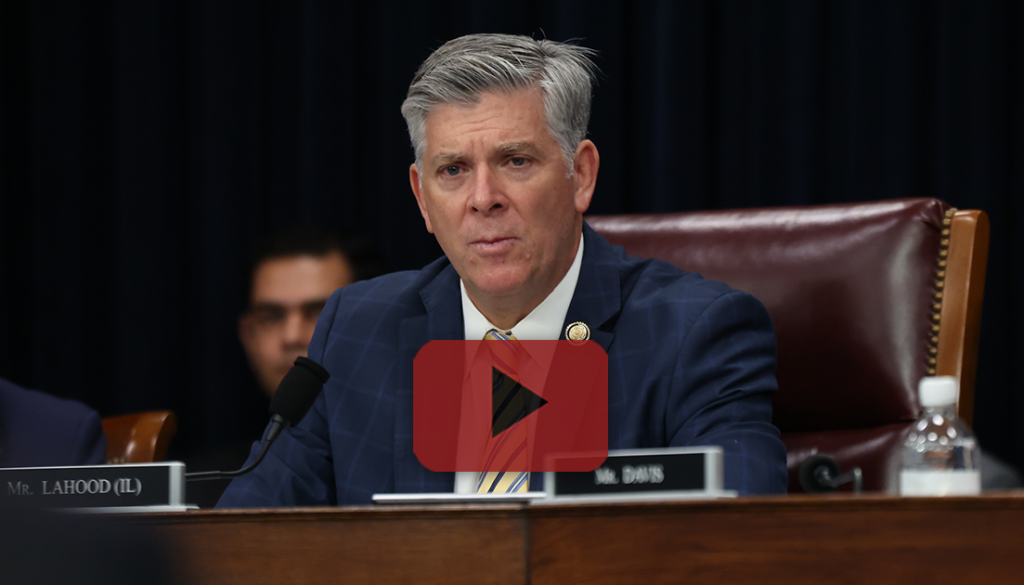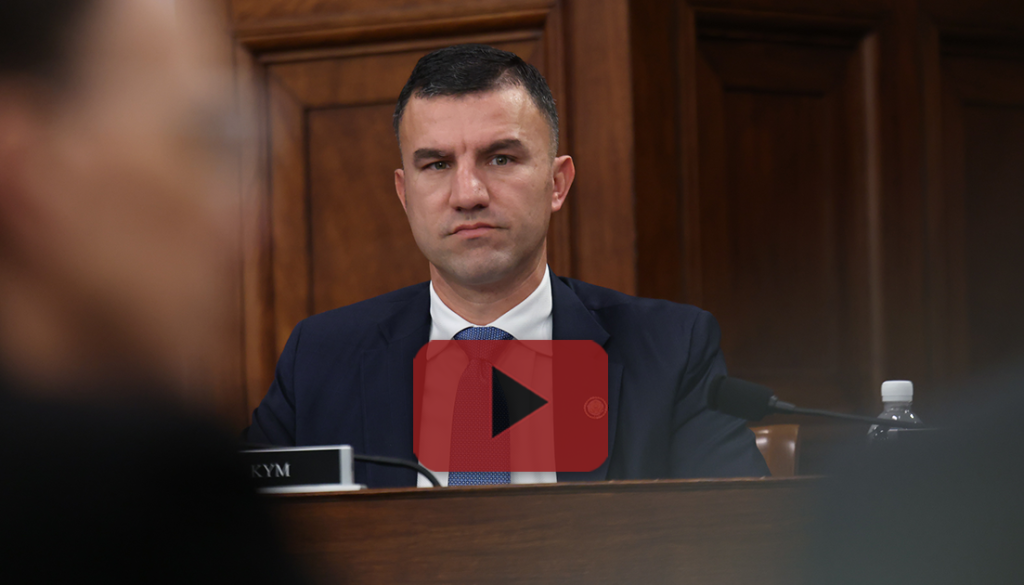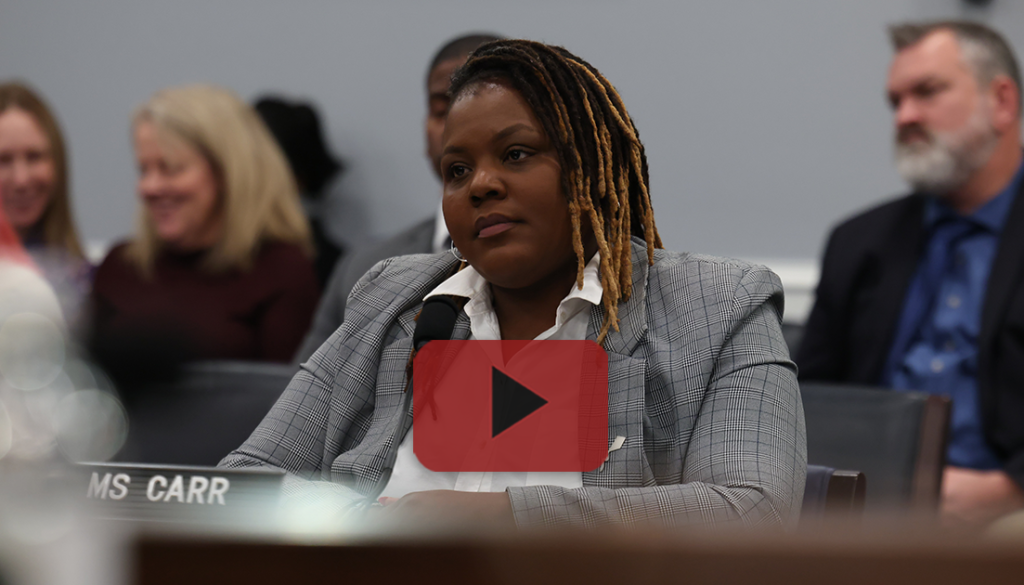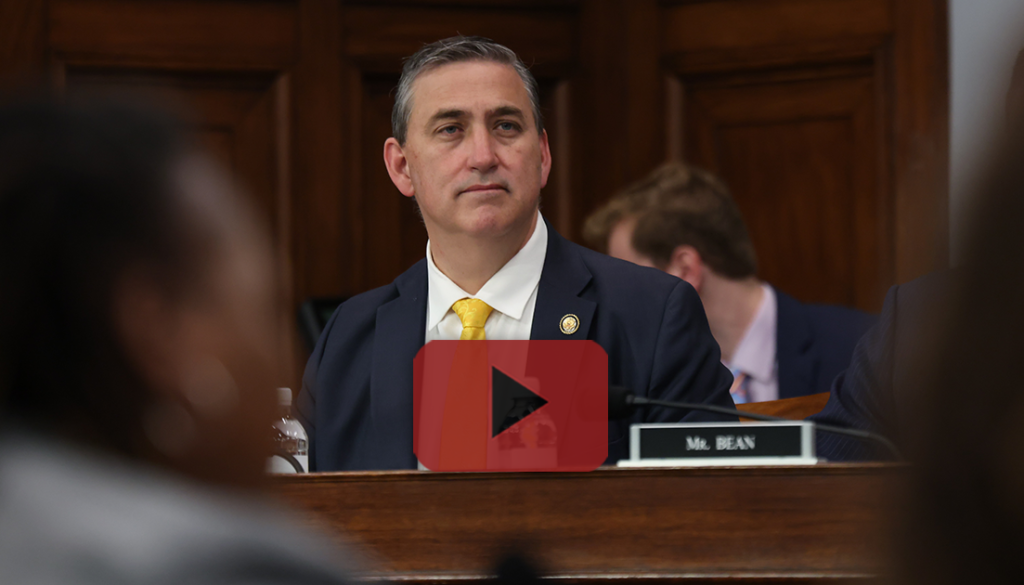WASHINGTON, D.C. – At a Ways and Means Work & Welfare Subcommittee hearing on modernizing the Chafee Foster Care Program for Successful Transition to Adulthood (“Chafee”), witnesses shared how using new and innovative technologies will enhance caseworkers’ ability to support foster youth transitioning to adulthood. Currently, caseworkers spend an average of four hours per day on documentation and paperwork because of outdated case management systems, mostly dating back to the 1990s, as well as green screen technology, electronic “sticky notes,” and Excel sheets.
The hearing is a part of the Committee’s ongoing efforts to modernize and reform the Chafee program and improve outcomes for foster youth and former foster youth. In June, the Work & Welfare Subcommittee held a hearing examining ways the Chafee program could be improved. Additionally, President Trump recently issued an Executive Order as part of First Lady Melania Trump’s “Fostering the Future Initiative” that identifies “antiquated information systems” as a problem for the nation’s foster care system and calls for states to expand the use of technology tools such as artificial intelligence in the child welfare systems.
Technology Is A “Force Multiplier”
The Chafee program helps foster youth gain employment, access housing, pursue post-secondary education, but one of its purposes of helping youth making meaningful connections with adults is less emphasized. Modern technology tools can empower caseworkers to spend more time supporting transition-age youth by reducing time spent on administrative tasks. However, technology alone cannot support foster youth; it must be paired with caseworkers who are trained in how to use technology to identify a consistent, supportive network of adults for foster youth that they can rely on to provide stability and guidance. Building and maintaining such relationships can change the life trajectory of a foster youth.

Rep. Darin LaHood (IL-16): “In your testimony you discussed the importance of identifying a supportive network for foster youth. The use of your technology has helped find a remarkable average of 30 connections per youth. How do you believe the Chafee program can be improved to help youth make permanent connections with family or other stable adults?”
Dr. Jennifer Jacobs, CEO and Co-Founder, Connect Our Kids: “The Chafee program can be improved by making it clear that these funds can be used to help states build these family-connecting tools, training, and education. As we’ve heard here several times, technology is not a solution; it’s a force multiplier. Those who are going to use the tools need the training and education to understand why relationships matter so much for human beings. When they have that understanding, they dive into this work with a passion, and that’s where technology allows their efforts to be multiplied.”
“Government Cannot Love a Child, But Neighbors Can”: Technology Connects Neighbors to Foster Youth
Technological innovations can help connect foster youth to other community members and meet their needs. One such innovation acts as an “Uber for child welfare” by connecting caseworkers in real time to resources offered by faith-based and community organizations to meet a transition-age youth’s specific needs. A witness highlighted that technology can bring together both resources and community members to help foster youth build permanent connections with their neighbors. These connections form a community-based safety net of support for youth that can promote their success in adulthood.

Rep. Rudy Yakym (IN-02): “You said something in your opening testimony that really struck me, and that is, ‘government cannot love a child, but neighbors can.’ What your portal provides is not a big government solution, but neighbors helping neighbors. And I want to thank you for that incredible service.”
Adrien Lewis, Founder and President, CarePortal: “There is not a lack of resources or people who care in our country for their neighbors. There is a lack of connection, and all CarePortal does is facilitate those connections at scale, so that the resources and relationships can get to where they need to go when they need to be there.”
Case Study: Chafee Puts Foster Youth on the Path Towards A Stable Job
Foster youth are eligible for Education and Training Vouchers (ETVs) which provide up to $5,000 annually for higher education or vocational programs. Tailored case management for transition-age youth can help them understand the different educational options available to them. Currently, ETV’s are generally used at community colleges and 4-year universities. More flexibility to help foster youth access short-term vocational training and certificate programs can be beneficial for exploring different career options. At the hearing, a Case Specialist implementing Youth Villages’ LifeSet model in Illinois shared the story of a foster youth who became a welder.

Lasheunda Carr, Illinois LifeSet Case Specialist: “We’re brainstorming with the youth – ‘Hey, you don’t have to go to a four year university. I understand. We’re not going to push university on you. You are the driver. What do you want to do?’…
“I just recently had a youth that graduated this summer from a welding program, and she is a young lady. She’s excited. This is a young lady that had one year of college under her belt. She decided to take that chance and change and go into a trade program. She did utilize those ETV funds with her trade program, as well as with the university. She was able to get all of her books, the equipment – because welding equipment is kind of expensive – but she was able to see those funds be beneficial to her.”
Artificial Intelligence Solves Coordinated Care Challenge
Information about a foster youth’s history is often buried in years of dense case notes and systems used to track youth are clunky and outdated. This leads to high turnover and burnout among caseworkers. New technology such as artificial intelligence can analyze years of these notes, revealing unmet needs and providing caseworkers with a clearer picture of the foster youth’s history. Antiquated technology inhibits the ability for multiple case managers to understand the full picture of a foster youth’s interaction with the child welfare system. Modern tools allow multiple databases to share information without compromising the security of personal information, helping caseworkers accurately see any potential gaps in care.

Rep. Nathaniel Moran (TX-01): “How can Augintel’s technology help caseworkers extract the information they need and piece together this unstructured data, such as identifying whether a child with a disability might need additional support?”
Martin Elisco, CEO, Augintel: “In child welfare, there are services that are provided both internal and external to child welfare. Developmental Disabilities [services] are provided by another area of government. This is a separate system. These systems do not talk to each other today. The way that coordination occurs between these systems, caseworker and the disability, developmental disability program and the child welfare program are calling each other; they’re emailing each other; and they cannot coordinate the care together. What Augintel does is – with the appropriate data sharing permissions in place – consolidates the data for multiple systems so both caseworkers can see the entire history of that child, regardless of the system that they’re interacting with, so that they can coordinate the care, provide a more efficient and a more effective level of service. AI is bringing that together for them, and not requiring fragmented calls and sticky notes, between these two agencies.”
